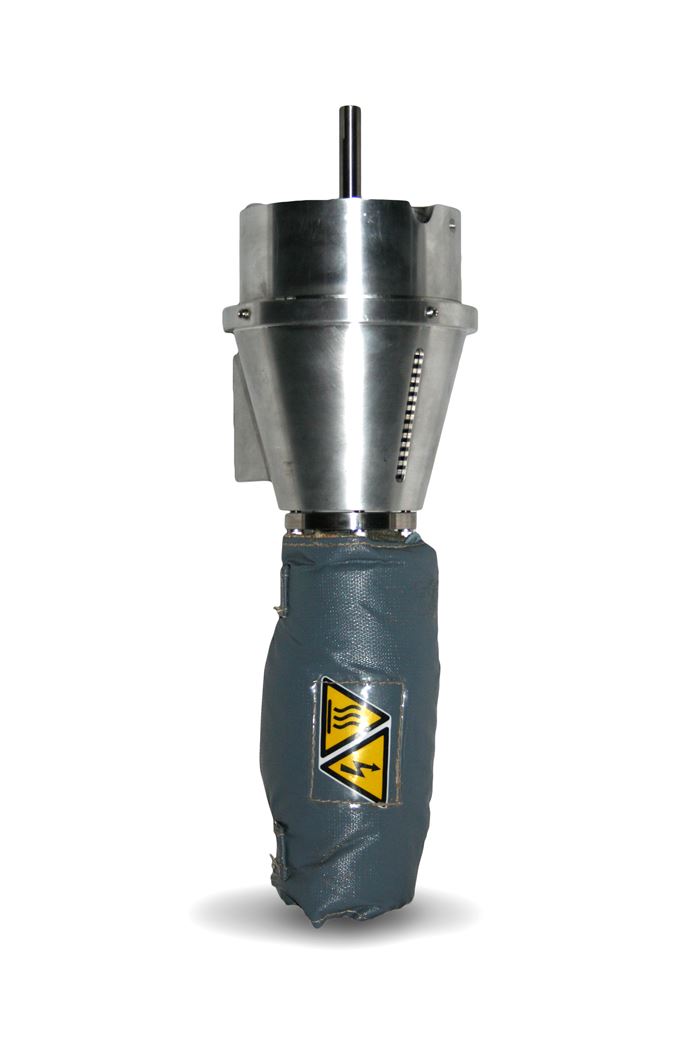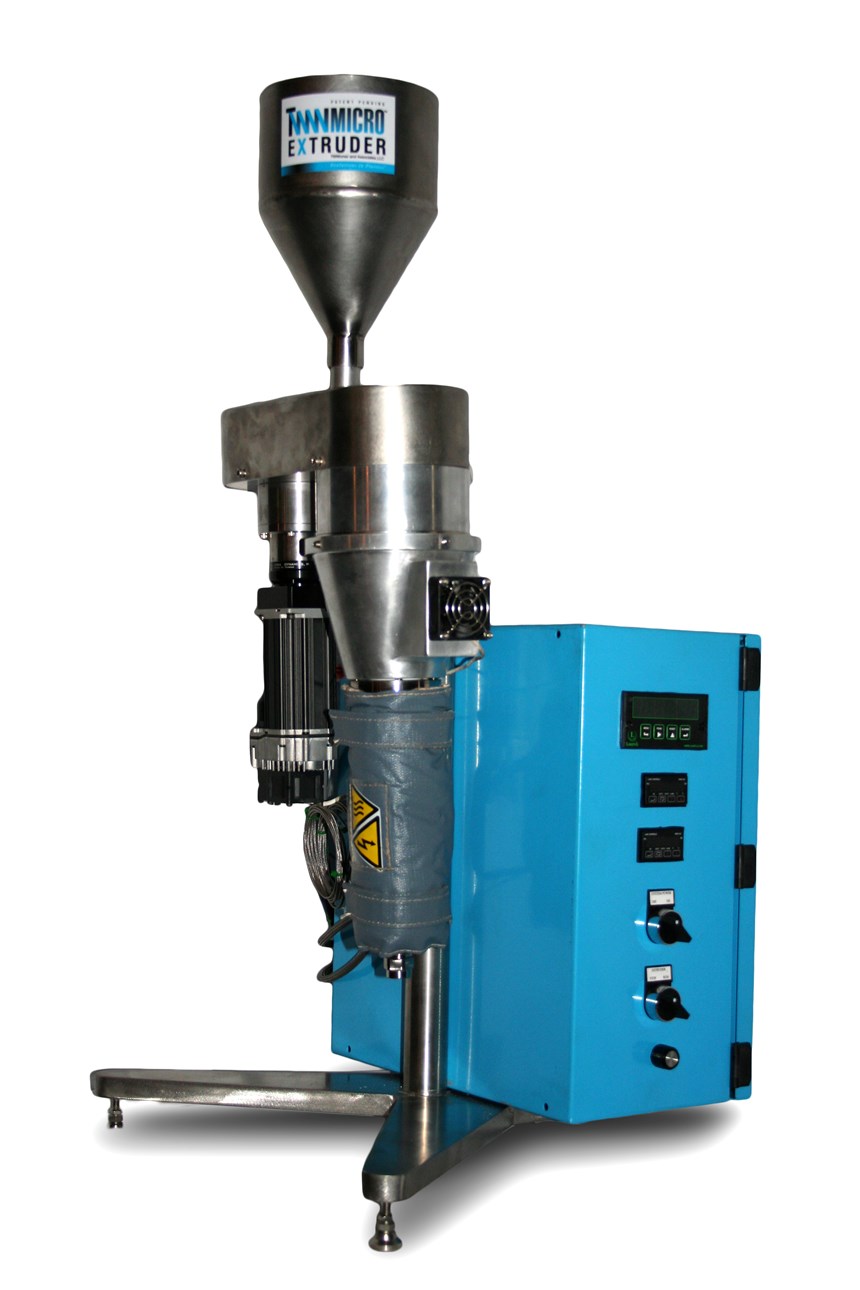Micro Extruder Can Run Normal-Sized Pellets for 3D Printing
Unit can be configured for lab use or mounted on a 3D gantry for 3D printing
A new micro extruder for 3D printing is believed to be the first machine of its size that can process standard-sized pellets. Developed by Tim Womer of TWWomer & Associates, Edinburg, Pa. and dubbed the TWW Micro Extruder, the patent-pending machine marks the most recent innovation by the well-known consultant in the area additive manufacturing. It can also run micropellets.
For the past four years, Womer has been working with Oak Ridge National Laboratory, Oak Ridge, Tenn., and Cincinnati Inc., Harrison, Ohio, to optimize screw technology on Womer’s TWW Ultra Lite extruder. The TWW Ultra Lite is larger than this new machine, with and a throughput (deposit) rate of 80-100 lb/hr. Roughly 20 TWW Ultra Lite machine are in use on the BAAM (big area additive manufacturing) machines that Cincinnati, Inc. has been furnishing.
The TWW Micro Extruder weighs approximately 15 lb and runs on a standard 120-v/15-a power source. The unit can be configured for lab use or mounted on a 3D gantry for 3D printing. The machine can process a wide range of resins, including carbon-fiber filled ABS and PLA, at throughputs to 20 lb/hr.
According to Womer, the new extruder is the first such machine to use a single vertical conical screw to feed and process standard-size pellets. This design reportedly reduces the extruder’s footprint and weight without sacrificing mixing performance. The screw has a unique helical compressed channel to generate pressurized heat. It feeds, compresses, melts, and mixes quickly and optimally as material passes from the input end toward the output end of the internal channel. According to Womer, current micro-extruders for 3D printing are slow, inefficient and only work with micro pellets.
The extruder is furnished with a nozzle tip, which can be sized depending on the bead size needed to print the part.
In addition to 3D printing, Womer says the TWW Micro Extruder can be used for materials development, testing, STEM (science, technology, engineering, and math) training, and more. Womer says he has shipped several units already.
Related Content
-
Medical Manufacturer Innovates with Additive Manufacturing and Extrusion Technology Hubs
Spectrum Plastics Group offers customers two technology hubs — one for extrusion, the other for additive manufacturing — to help bring ground-breaking products to market faster.
-
NPE 2024: Additive Manufacturing Assisting, Advancing Plastics Processing
Exhibitors and presenters at the plastics show emphasized 3D printing as a complement and aid to more traditional production processes.
-
Make Every Shot Count: Mold Simulation Maximizes Functional Parts From Printed Tooling
If a printed tool only has a finite number of shots in it, why waste any of them on process development?


















